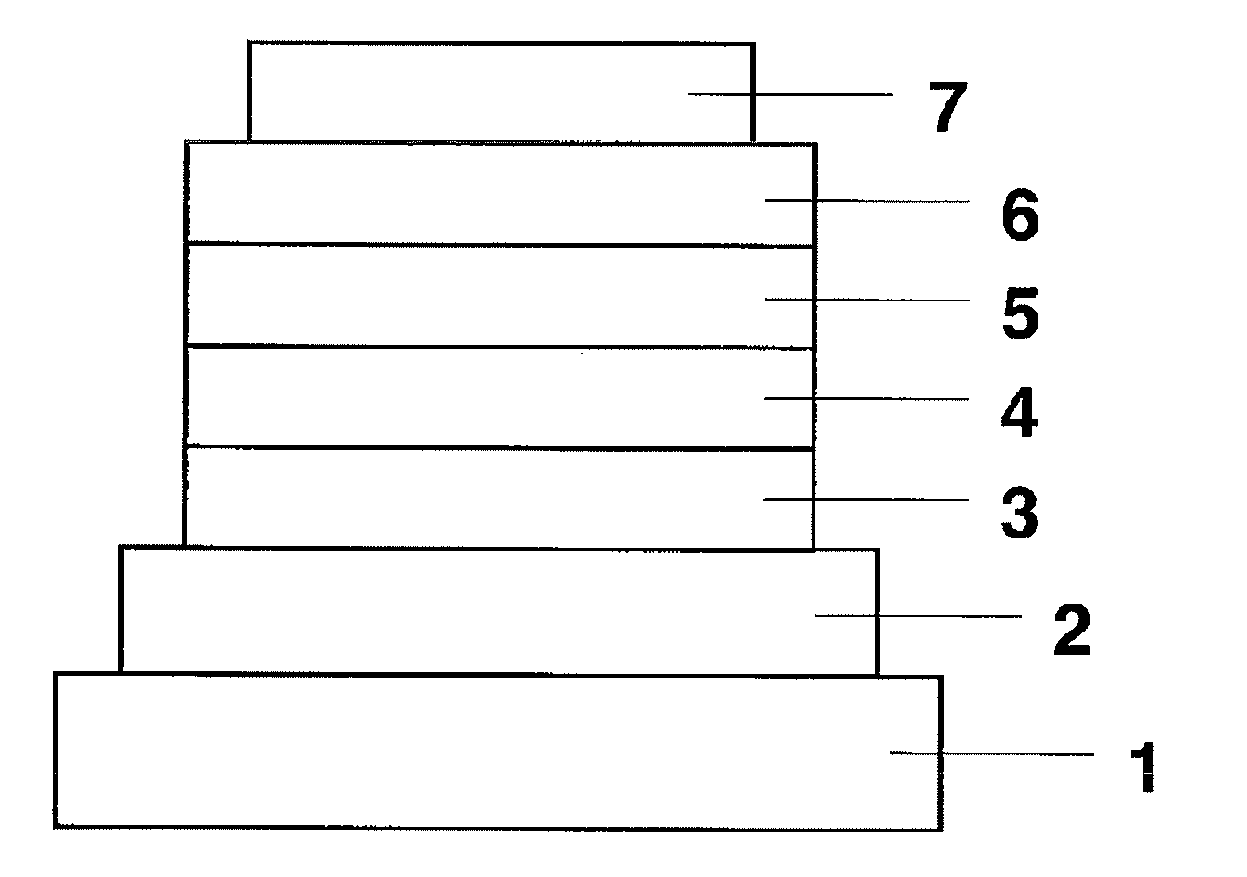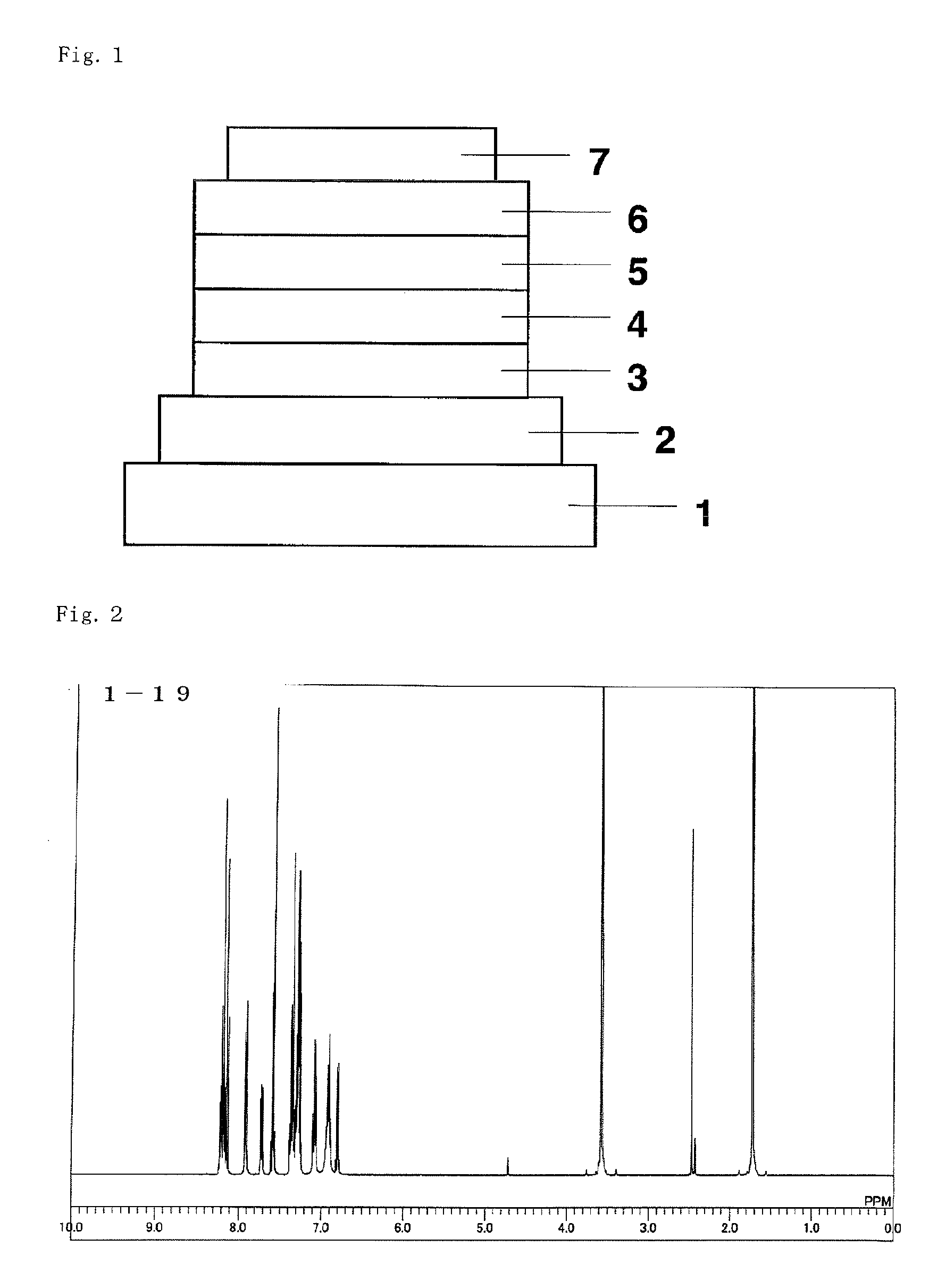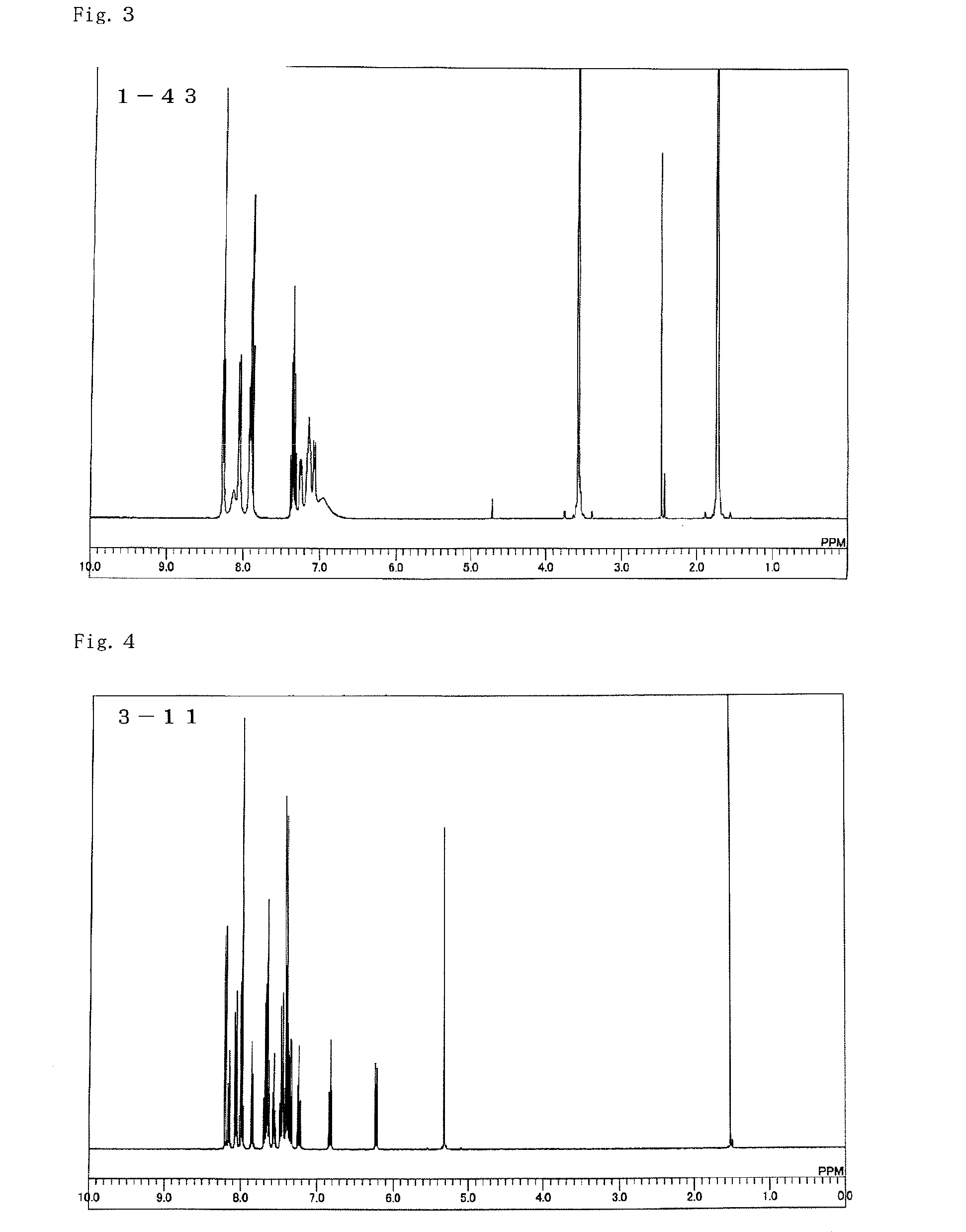Material for use in phosphorescent device and organic electroluminescent device using same
a technology of phosphorescent lightemitting device and organic electroluminescent device, which is applied in the direction of luminescent composition, thermoelectric device, organic chemistry, etc., can solve the problem of unreachable high-efficiency light emission, achieve high luminous efficiency, ensure sufficient stability in driving the device, and improve the luminous efficiency of the device
- Summary
- Abstract
- Description
- Claims
- Application Information
AI Technical Summary
Benefits of technology
Problems solved by technology
Method used
Image
Examples
synthesis example 1
Synthesis of 11,12-dihydroindolo[2,3-a]carbazole (IC-1)
[0097]
[0098]Under a nitrogen atmosphere, 3.0 g (0.031 mol) of concentrated sulfuric acid were added dropwise over 5 minutes to 33.3 g (0.30 mol) of 1,2-cyclohexanedione, 86.0 g (0.60 mol) of phenylhydrazine hydrochloride, and 1,000 ml of ethanol with stirring at room temperature. After that, the mixture was stirred for 4 hours while being heated at 65° C. The reaction solution was cooled to room temperature. The precipitated crystal was then collected by filtration and washed with ethanol (2×500 ml) to afford 80.0 g of a purple-brown crystal. 72.0 g (0.26 mol) of the crystal, 72.0 g of trifluoroacetic acid, and 720.0 g of acetic acid were stirred for 15 hours while being heated at 100° C. The reaction solution was cooled to room temperature. The precipitated crystal was then collected by filtration and washed with acetic acid (200 ml). The crystal was subjected to purification by reslurrying to afford 30.0 g (45% yield) of IC-1 ...
synthesis example 2
Synthesis of 5,12-dihydroindolo[3,2-a]carbazole (IC-2)
[0099]
[0100]Under a nitrogen atmosphere, a hydrogen chloride gas produced by adding dropwise 112.0 g (1.10 mol) of concentrated hydrochloric acid to 211.7 g (2.16 mol) of concentrated sulfuric acid over 1 hour was blown into a solution of 20.0 g (0.17 mol) of indole in 300 ml of dry diethyl ether, while the solution was being stirred at room temperature. After the reaction solution was stirred at room temperature for 15 hours, 121.0 g of ethyl acetate and 303.2 g of a saturated sodium hydrogen carbonate aqueous solution were added. After the aqueous layer in the mixture was extracted with ethyl acetate (2×100 ml), the organic layer was washed with a saturated sodium hydrogen carbonate aqueous solution (100 ml) and distilled water (2×100 ml). The organic layer was dried over anhydrous magnesium sulfate. The magnesium sulfate was then separated by filtration and the solvent was subjected to vacuum distillation. The resultant residu...
example 1
Synthesis of Compound 1-19
[0102]
[0103]Under a nitrogen atmosphere, 26.0 g (0.10 mol) of IC-1, 122.7 g (0.60 mol) of iodobenzene, 54.7 g (0.29 mol) of copper iodide, 66.7 g (0.48 mol) of potassium carbonate, and 800 ml of quinoline were stirred for 72 hours while being heated at 190° C. The reaction solution was cooled to room temperature. After that, distilled water (500 ml) and dichloromethane (500 ml) were then added while being stirred. The precipitated crystal was separated by filtration. The organic layer was then washed with distilled water (3×500 ml). The organic layer was dried over anhydrous magnesium sulfate. The magnesium sulfate was then separated by filtration and the solvent was subjected to vacuum distillation. The resultant residue was purified by silica gel column chromatography to afford 13.7 g (41% yield) of an intermediate B as a white solid.
[0104]Under a nitrogen atmosphere, 1.00 g (0.0030 mol) of the intermediate B, 0.70 g (0.0030 mol) of 2-bromo-6-phenylpyridi...
PUM
| Property | Measurement | Unit |
|---|---|---|
| work function | aaaaa | aaaaa |
| transmittance | aaaaa | aaaaa |
| thickness | aaaaa | aaaaa |
Abstract
Description
Claims
Application Information
 Login to View More
Login to View More - R&D
- Intellectual Property
- Life Sciences
- Materials
- Tech Scout
- Unparalleled Data Quality
- Higher Quality Content
- 60% Fewer Hallucinations
Browse by: Latest US Patents, China's latest patents, Technical Efficacy Thesaurus, Application Domain, Technology Topic, Popular Technical Reports.
© 2025 PatSnap. All rights reserved.Legal|Privacy policy|Modern Slavery Act Transparency Statement|Sitemap|About US| Contact US: help@patsnap.com



